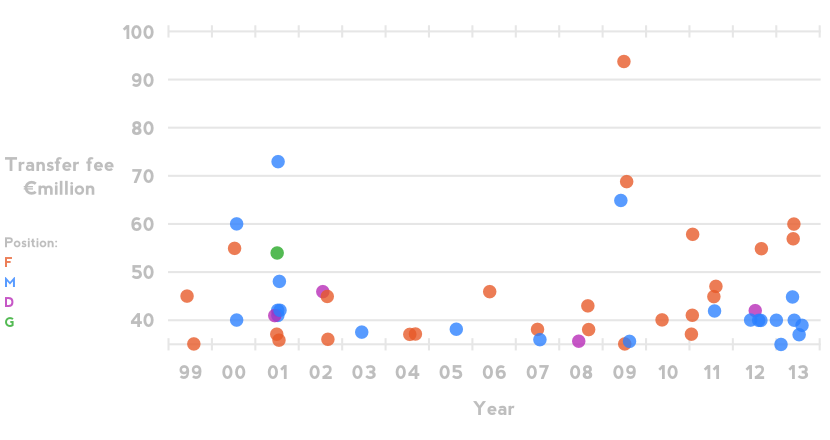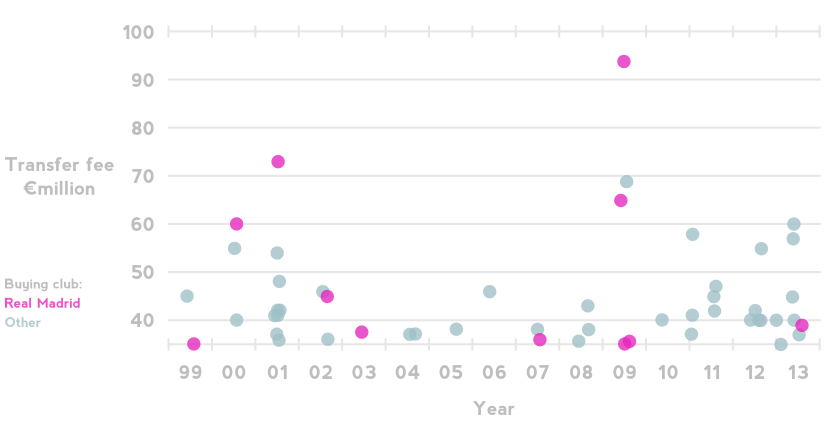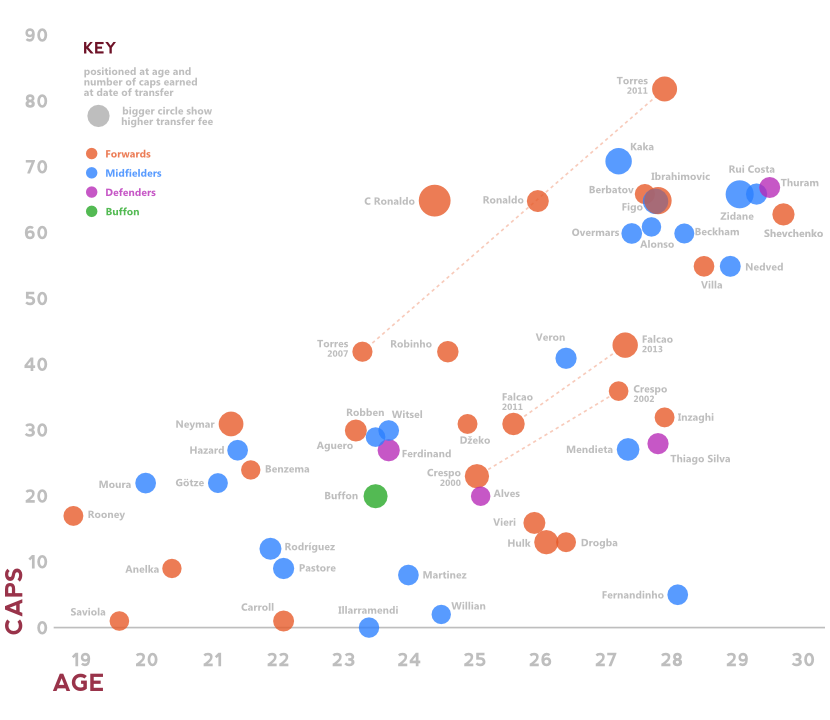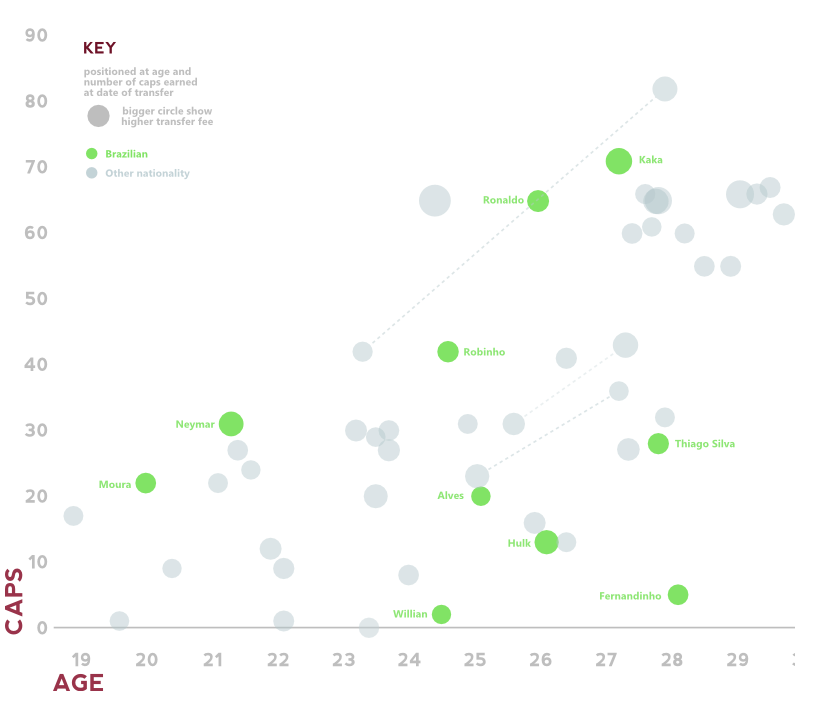Cash for caps

Earlier in the transfer window Manchester City paid a reported €40m to Shakhtar Donetsk for Fernandinho and last week Real Madrid signed Asier Illarramendi from Real Sociedad for €39m. The two transfers have raised eyebrows for similar reasons. Fernandinho is 28 years old and has played for Brazil only five times and Illarramendi is 23 years old and has never played for Spain's senior team (although he was part of the U-21 squad that won the European Championship last month). It seemed odd for such high fees to be paid for players whose country felt was worth involving in so few matches despite being well established at club level, Fernandinho in particular, so I decided to compare them with other big money transfers.
I have included all the transfers ever made that have seen €35m or more trade hands between clubs, of which there have been 52. I used figures from Transfermarkt, who rank deals on their value in euros at the time they were made.
Before I get on to caps, I’ve had a quick look at those transfers in a few other ways. First I have plotted them by value against the date they were made. The colours show the footballers’ playing positions.

There was only one transfer over €40m made in the period 2003 to 2007, which was Andriy Shevchenko's 2006 move to Chelsea. Either side of that are two distinct groups of big deals. The first, from 1999 to 2002, was topped by Real Madrid’s galáctico midfielders Zinedine Zidane and Luis Figo. The second, which began in 2009 and is ongoing, was again dominated by Real Madrid with the signings of Cristiano Ronaldo and Kaká being two of the biggest three. That second phase had been dominated by strikers until a flurry of transfers of midfielders costing €35m to €45m started in 2012, the latest of which being Illarramendi.
Here is the same data with the Real Madrid buys highlighted:

Here are the transfers plotted by the players’ ages at the time they moved.

In the first era of expenditure it was old midfielders that were particularity highly valued but in the recent spate all midfielders have been aged between 20 and 25 aside from Fernandinho.
This next chart shows the players’ ages and the caps they had earned at the time of their transfer as well as position and value*.
I recommend clicking the image to toggle key and labels

I also recommend clicking here for an extended version that includes the career-end cap totals of players that have retired from international football **
Fernandinho definitely sticks out at the bottom right of the image. With several variables involved you could phrase his uniqueness in a number of ways:
It must be pointed out that there is little shame in being overlooked for international duty when your home country has the breadth and depth of available players that Brazil has. Here the Brazilian players have been highlighted:

Brazilians make up a large proportion of the players at the bottom right of the chart. Being based in the Ukraine, which is relatively distant from Europe's major leagues and certainly from Brazil itself, can hardly have helped Fernandinho either (as former Shakhtar team-mate Willian also demonstrates).
Earning many international caps does not prove high quality, and earning few caps does not prove low quality so Fernandinho's low tally is far from enough to start calling him a bad buy, or even a risky one given his extenuating nationality. What we certainly can say is that the transfer is an unusual one.
Illarramendi's status is more straightforward: he's the most expensive player ever transferred, and only one costing more than €35m, without a senior international cap. He is unusual, but less so than Fernandinho because the graphic shows that the Spaniard is not so old that he can't start racking up caps now and stay within the main cluster, albeit near its lower edge. Like Brazil, Spain is rich in talent and Illarramendi has the additional excuse of an U-21 European Championship cycle keeping him occupied considerably beyond the age of 21.
-
* Michael Essien’s transfer to Chelsea in 2005 has not been included because I can’t for the life of me find a record of how many caps he had at the time (I do know he was 22 years and 8 months old).
-
** Ronaldo has two career trajectories on the enlarged image. One leads to the cap total he had when his Brazil career ended for all intents and purposes in 2006, his last ‘real’ cap. The other includes what was essentially a testimonial, although still an official international match, in 2011.

Beautiful analysis! Really interesting that we had this lull in +40m transfers between 2003 and 2007, especially given that 2006 was a World Cup year when prices are obviously inflated.